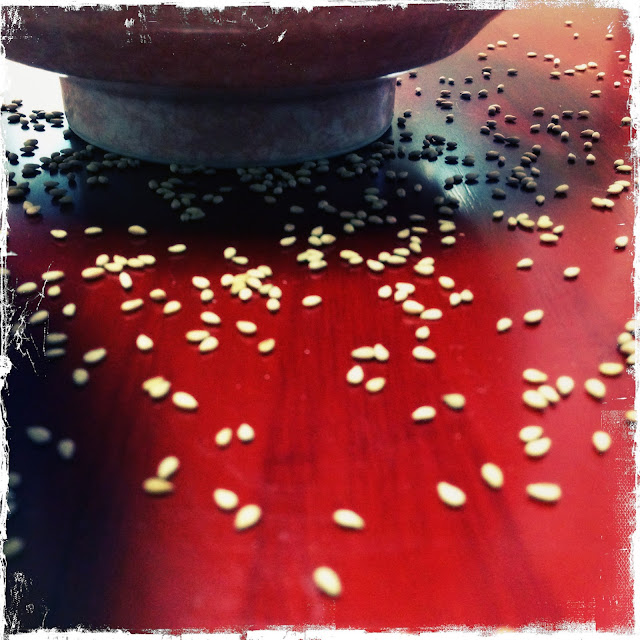 |
| Goat Cheese |
THE FOOD
Goat Cheese / Soy Cheese
Who doesn't love the soft tangy love that is goat cheese? Not anyone who can be trusted, that's who.
(After trying this cheese, try making feta. It's not too hard and very delicious.)
(After trying this cheese, try making feta. It's not too hard and very delicious.)
THE QUANDARIES
Where exactly does on find goats milk in South Korea? As it turns out, the solution isn't sexy, but it is pretty simple: Home Plus or E-Mart. Please note though, not all of these stories carry it. We have it in Pyeongtaek and they have it in many of the ones that I've been to in Seoul.
Of course, you also need cheese clothe and they don't make cheese in Korea! But actually they do... but they call it tofu. What did I just say? Tofu? Yes, tofu is just soy cheese. It's made in the same way as other soft cheeses so they have clothe to strain it at almost all stores that sell cooking supplies.
Then there is the issue of herbs for encrusting your goat cheese, Korea doesn't have those... but you are wrong. Nearly all the "Asian Markets" serving the Filipino, Thai and Vietnamese communities have a section of locally grown basil, cilantro and more. It's actually everywhere (we travel a lot in Korea and every "Asian Market" we have found has had these items), you just not where you thought to look. On top of that, it's pretty darn cheap and available year round.
THE SOLUTIONS
Required
400 ml goats milk or Soy Milk
1 lemon
Optional
salt
herbs
400 ml goats milk or Soy Milk
1 lemon
Optional
salt
herbs
First, heat goats milk SLOWLY to 180F in a clay or stainless steal pot (not aluminum, yuck). You can use a thermometer, but if you don't have one just look for a bunch of tiny bubble appearing at the top of the milk. While you are waiting for this to happen juice the lemon and have it ready.
 |
| It looks like this. Pretty subtle. |
Second, add the juice of the lemon. Stir it quickly, turn off the heat and walk away for ten minutes. Prepare a good sized sieve with two layers of cheese clothe.
Third, the milk has now curdled and separated. You can stir in a little salt or herbs at this point if you so desire. Once you are finished with that though, pour the mixture slowly in the sieve and let it drain for about 10 minutes.
Fourth, gather the cheese clothe up around the cheese and hang it over the sink for another 1.5 hours and let drip.
Fifth, remove the cheese from the cheese clothe onto plastic wrap. You can use this to form the cheese into a log or ball or heart or star or whatever you feel like. Have some fun with it. It's like yummy play dough at this point.
 |
| Soy Cheese |


































